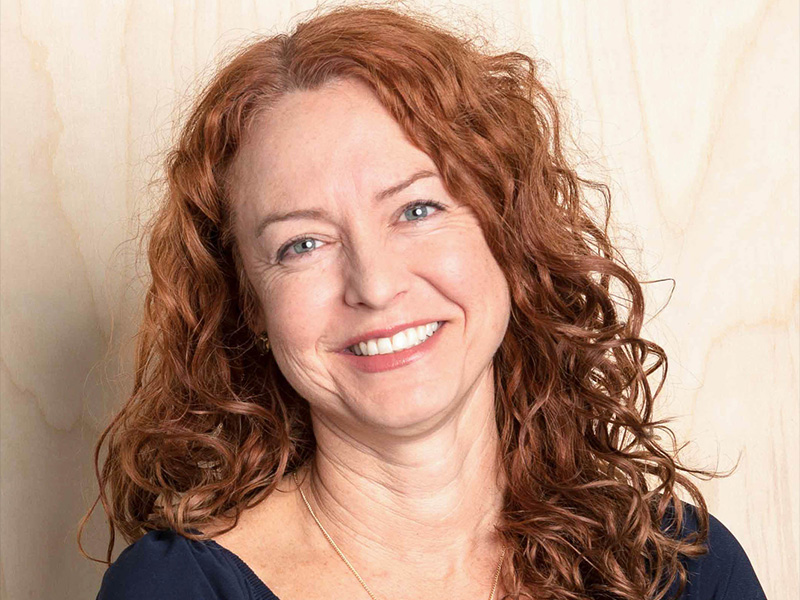The Lost Language of Love in Architecture
Sonja Bochart, IIDA, LEED AP, WELL AP | Principal, Biophilic Design Consultant, Shepley Bulfinch
Watch This Presentation:
In her presentation entitled “The Lost Language of Love in Architecture,” sustainability leader and biophilic design advocate Sonja Bochart examined the ways our physical, mental and emotional wellbeing are impacted by the spaces in which we live and work. She argues that by integrating sustainable design elements into our buildings, we can create a spirit in our respective places that not only inspires and delights but deepens our connection with nature.
“What if we introduced our place before we even introduced ourselves?” This is the question that Bochart asks her audience to consider. “In my years of working in biophilic design and workshopping and asking people of the places that they’d want to be, it’s always in nature. It might be in their backyard. It’s the elements, it’s the water, it's the air, it's nature, it's quiet – it’s the place. This is what we’re trying to create.”
Though we may not realize it, our built environments play a substantial role in our health and well-being. “It influences all the systems within the body. The stress response, blood pressure, heart rate, the nervous system, the functioning of the brain and our physical/emotional wellbeing. But we didn't always live like this. Despite having spent 95% of our evolutionary history in natural environments, deeply connected and immersed in nature, the majority of the human beings around the globe are now urban dwellers. And we’re going to continue to see this pattern.” With city living on the rise and more and more people spending their time indoors, how can we uncover our essence of place through biophilia?
Bochart looks to social ecologist and Yale senior research scholar Stephen Kellert for an answer. Kellert identifies six different elements we can incorporate into our biophilic designs: environmental features, natural shapes and forms, natural patterns and processes, light and space, place-based relationships, and evolved human-nature relationships. These small gestures remind us of our connection to nature and can provide numerous benefits such as decreases in stress reduction violence and crime alongside corresponding increases in community connection, property values, productivity and even test scores. “That connection to place is deeply inherent in who we are. And for most, that connection has been lost. This is our opportunity to reclaim it.”
But this work cannot be done alone. “Whatever scale project you’re working on or thinking about, it’s always helpful to have early engagement and commitment from your teams on fostering that connection to nature and nature’s patterns. It’s important to have everyone at the table. Community members, stakeholders, artists, biologists, ecologists, historians, students – whoever can contribute and give their voice.”
“It’s not about doing less bad. What can we contribute? How can we make a positive influence that will carry forward?” Bochart calls for more public spaces that entice, engage, foster creativity, strengthen connections and let us take respite in beauty. With the creation of quiet and reflective spaces where people can enjoy spending their time, ordinary spaces no longer have to be dull and disheartening. Rather, the spaces where we live and work can be transformed to inspire an understanding and love for place.
Additional Resources:

About the Speaker
Sonja Bochart, a design leader in health and wellness for over 20 years, has an extensive background in creating spaces to support both human and ecological well-being. She works nationally as a principal and sustainability leader with Shepley Bulfinch, a national, award-winning architectural design firm. Sonja’s portfolio includes leading the design for projects in most all building sector project typologies: workplace, healthcare, educational, community, mental health and cultural centers. A recognized regenerative leader and educator in the industry with an extensive teaching background at Arizona State University’s Herberger School of Design, she contributes to Interior Design’s Healthcare and Wellness Council, serves as a founding and current advisory council member for the International Living Future Institute's Biophilic Design Initiative, and participates on the board for the international nonprofit organization Green Plants for Green Buildings. As an advocate for fostering connections between people and the natural world, Sonja is one of the foremost facilitators for project and team biophilic design workshops, including consulting for LEED, Living Building Challenge and WELL Building Standard design charrettes for University of Washington, the Georgia Institute of Technology and Phipps Conservatory and Botanical Gardens. An avid designer, educator, speaker and workshop facilitator, Sonja’s work features the latest in evidence-based design research relative to sustainable design, mindfulness, living-systems, and human physiological, emotional and physical well-being.




